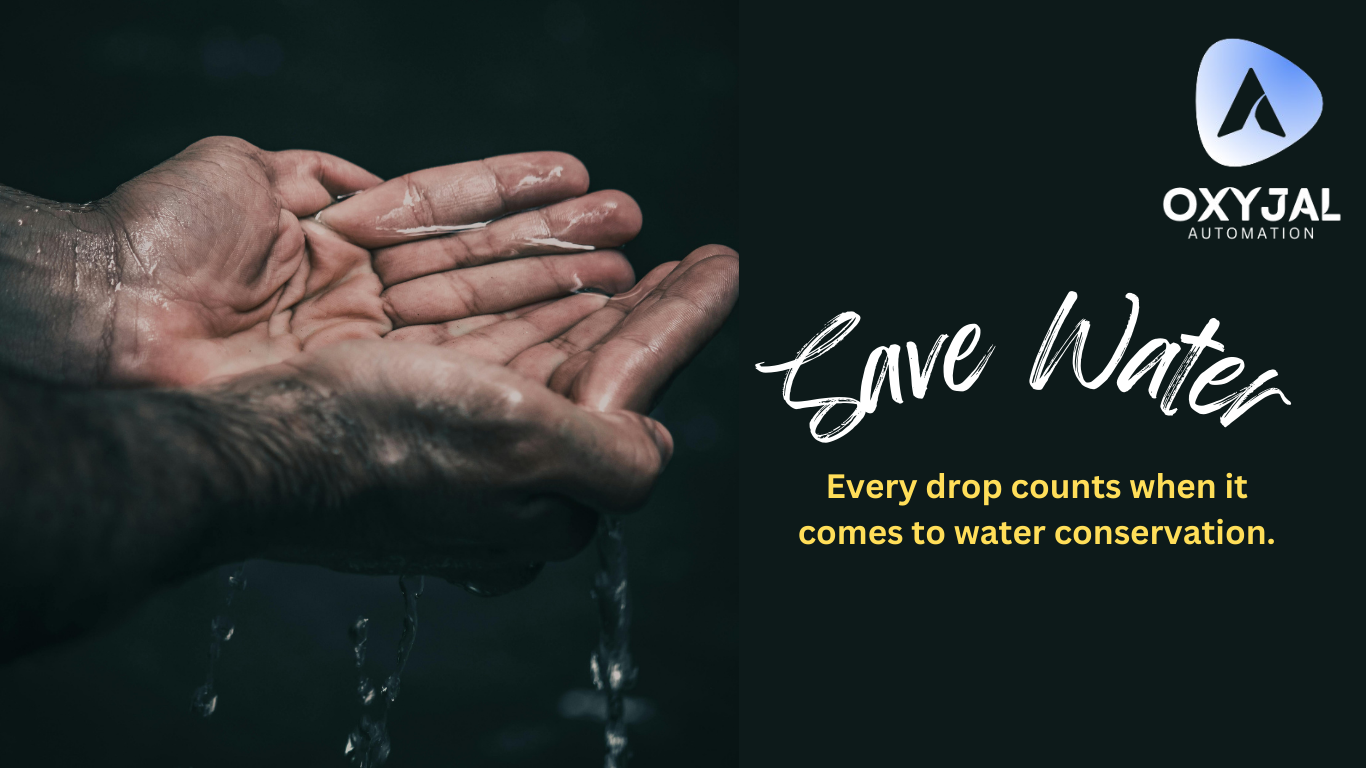Water is one of the most precious resources on Earth, yet it’s often taken for granted. As populations grow and climate change exacerbates water scarcity, it’s more important than ever to conserve water. Whether you’re a homeowner, farmer, or business owner, adopting water-saving strategies can make a significant impact. In this blog, we’ll explore the top 7 ways to save water and how small changes can contribute to a more sustainable future.
1. Install Automatic Water Management Systems
One of the most effective ways to save water is by automating your water management. Automatic submersible starters, like those offered by OXYJAL Automation, can help regulate water distribution without the need for constant monitoring. These systems ensure that pumps operate only when needed, preventing water wastage due to over-pumping.

Benefits of Water Automation:
- Precision Control: Set schedules and monitor water usage efficiently.
- Energy Savings: Reduces electricity consumption by automating the on/off cycles of pumps.
- Increased Lifespan: Proper pump management minimizes wear and tear.
2. Fix Leaks Immediately
A dripping faucet may not seem like a big deal, but even a slow leak can waste hundreds of gallons of water over time. Make it a habit to check your faucets, pipes, and toilets for leaks regularly. Fixing small leaks can prevent larger issues down the road and save you a significant amount on water bills.
Quick Tip: Place a drop of food coloring in your toilet tank. If the color shows up in the bowl without flushing, you have a leak that needs to be fixed.
3. Install Low-Flow Fixtures
Switching to low-flow faucets, showerheads, and toilets can reduce water consumption by up to 50%. These fixtures limit the flow of water without compromising on performance, helping you save water without sacrificing comfort.
Consider Installing:
- Low-Flow Showerheads: Reduces water usage during showers without losing water pressure.
- Dual-Flush Toilets: Allows for water conservation with a smaller flush for liquid waste.
4. Harvest Rainwater
Rainwater harvesting is an ancient yet highly effective way to conserve water. By installing a rainwater collection system, you can capture and store rainwater for uses such as gardening, landscaping, and even household chores. This reduces your dependence on tap water and helps conserve municipal water supplies.
Uses for Harvested Rainwater:
- Watering plants and gardens.
- Washing vehicles and outdoor areas.
- Filling pools or fountains.
5. Water Plants Wisely
Many people waste water by overwatering their plants or watering them at inefficient times of the day. To optimize water usage for gardening:
- Water Early: Watering early in the morning minimizes evaporation due to the sun’s heat.
- Use Drip Irrigation: Drip irrigation systems deliver water directly to plant roots, minimizing waste.
- Choose Native Plants: Opt for plants that are native to your region, as they typically require less water.
6. Reuse Greywater
Greywater is the relatively clean waste from baths, sinks, washing machines, and other kitchen appliances. Instead of letting it go to waste, greywater can be reused for non-potable purposes like landscape irrigation or flushing toilets.
How to Reuse Greywater:
- Install a greywater recycling system to divert water from showers and washing machines to your garden.
- Use water from rinsing vegetables to water your indoor plants.
7. Educate and Involve Your Family or Team
One of the best ways to conserve water is by fostering awareness. Make water conservation a family or workplace initiative. Educate everyone about the importance of saving water and encourage them to take steps like turning off the tap while brushing teeth or taking shorter showers. Small daily habits can make a big difference.
Pro Tip: Create a water-saving checklist or challenge for your home or office to encourage everyone to participate in conservation efforts.
Why Saving Water Matters
Conserving water is not only about saving money on your utility bills—it’s about ensuring a sustainable future for generations to come. Here are just a few reasons why water conservation is crucial:
- Combat Water Scarcity: Many regions around the world face water shortages. Conserving water helps reduce the pressure on these resources.
- Reduce Energy Usage: The energy required to pump, heat, and treat water is significant. By using less water, you also reduce energy consumption.
- Preserve the Environment: Water conservation reduces the strain on local ecosystems, including rivers, lakes, and wetlands, which are essential for wildlife.
- Mitigate the Effects of Drought: Conserving water can help communities endure periods of drought by extending the availability of water supplies.
Take Action Today
Water conservation starts with small changes that add up over time. By adopting the strategies mentioned above—such as installing automatic water management systems, fixing leaks, and using water-efficient fixtures—you can help protect one of the world’s most valuable resources.
At OXYJAL Automation, we are committed to providing sustainable water management solutions like automatic submersible starters that promote water conservation and efficiency. Together, we can build a greener, water-smart future.
Conclusion
Every drop counts when it comes to water conservation. By implementing these water-saving strategies at home, on your farm, or in your business, you’ll not only save money but also contribute to a more sustainable planet. Start making small changes today and encourage those around you to do the same—because saving water is a collective effort that benefits everyone.

